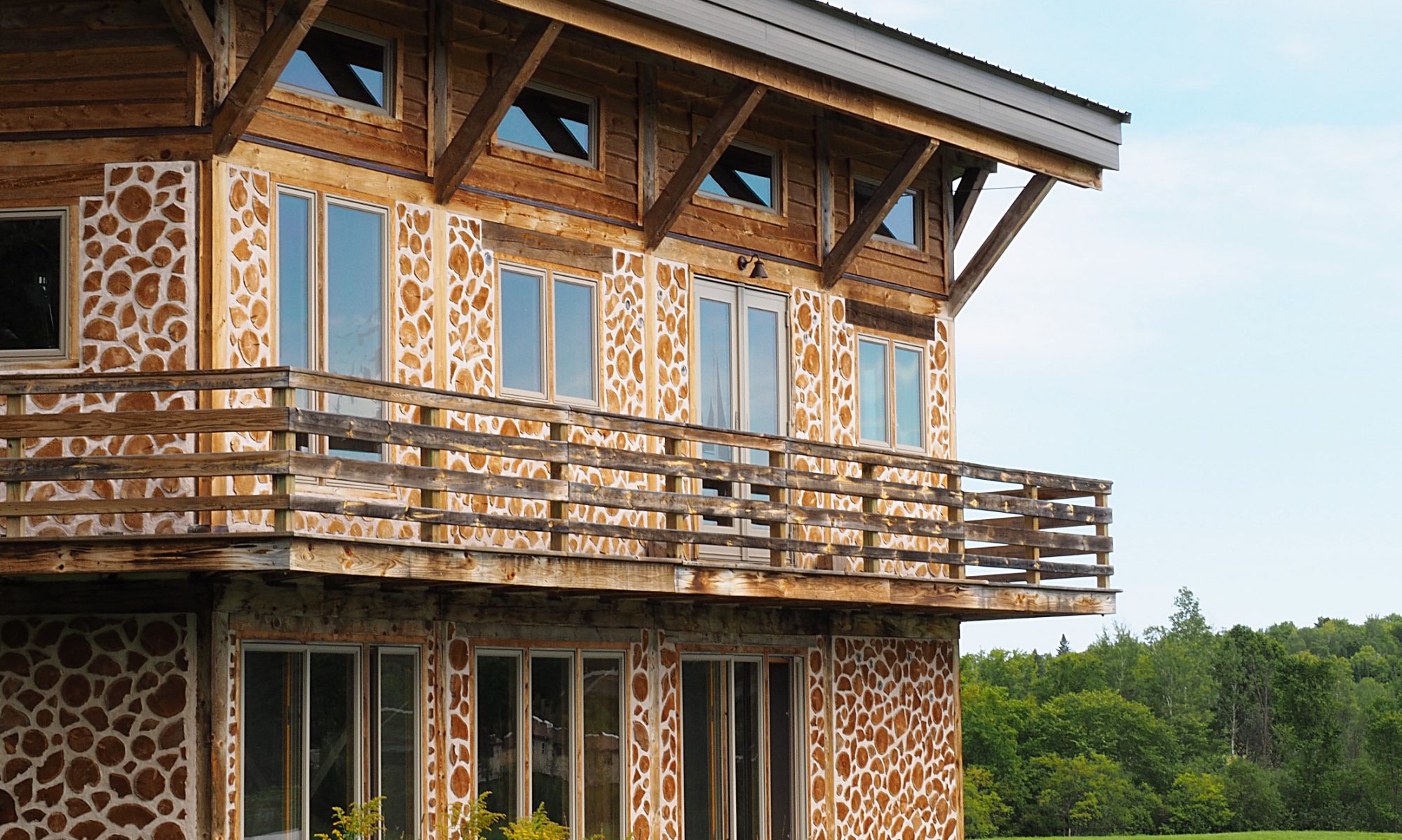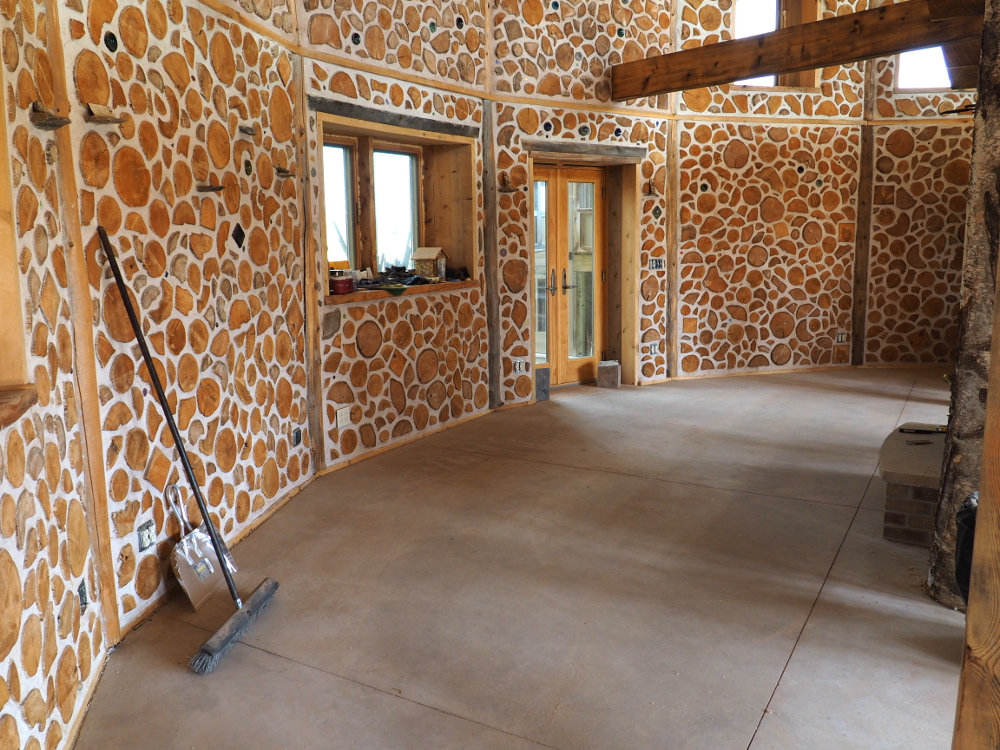After working upstairs for a while, we decided to turn our attention to the downstairs. We had planned all along to stain and seal the concrete floor, because we like the looks of a stained concrete floor, and because it allows the in-floor heat to work in the most efficient way possible, with no other floor coverings getting between the heated tubing and our toes. Another important benefit of staining and sealing is that a darker floor will absorb more heat from sunlight, maximizing our passive solar gain.
The first order of business was clearing the floor – not an easy task, as it was covered with stacks of wood, piles of boards, towers of logs, tools, more tools, shelves, slabs of wood, and wood. Years of accumulated stuff. We moved stuff upstairs, we moved stuff to the porch, the shed, and to our storage unit. Since we will be tiling the first-floor bathroom (so it doesn’t need to be stained), we put the table saw and a few other very heavy things there. I even sawed off the little nubbins of rebar sticking out of the slab from when I mis-measured ten years ago. Damn you, younger Greg! Finally we had the slab cleared and we could start cleaning it.
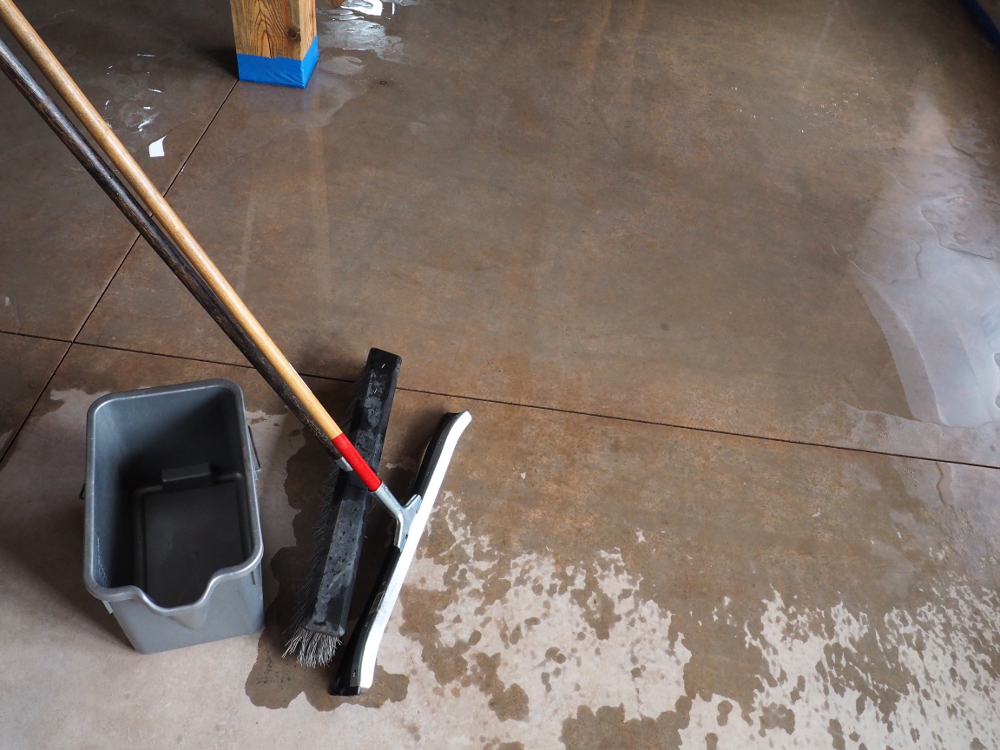
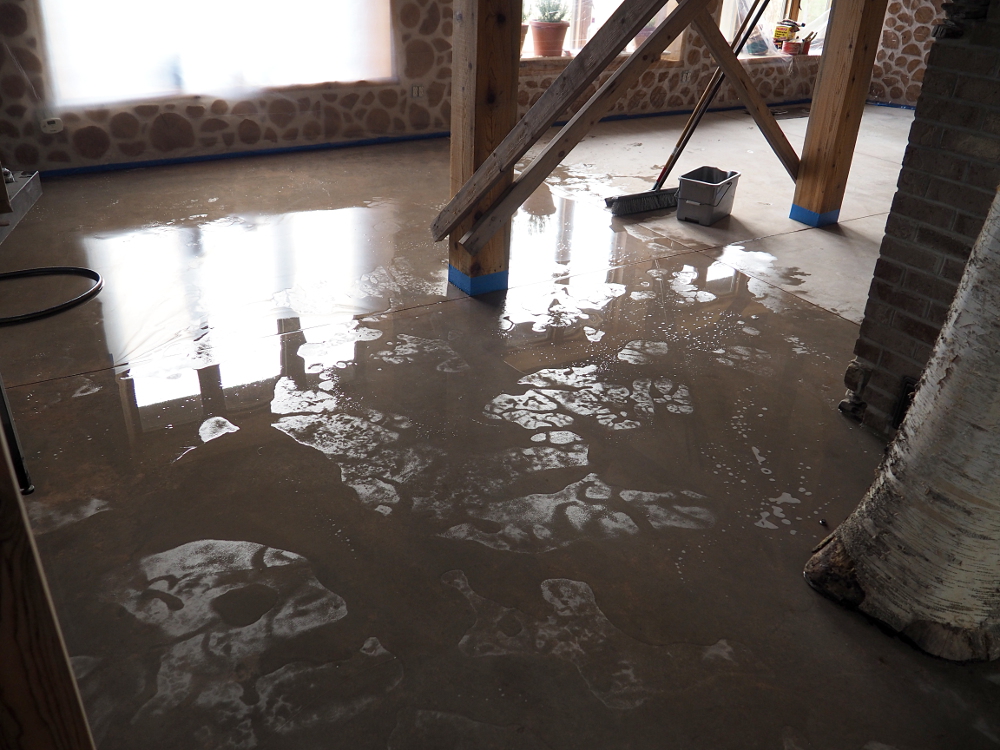
Scrubbing with brooms, wet-vaccing, digging out the gunk in the expansion joints, we finally had a lovely clean slab:
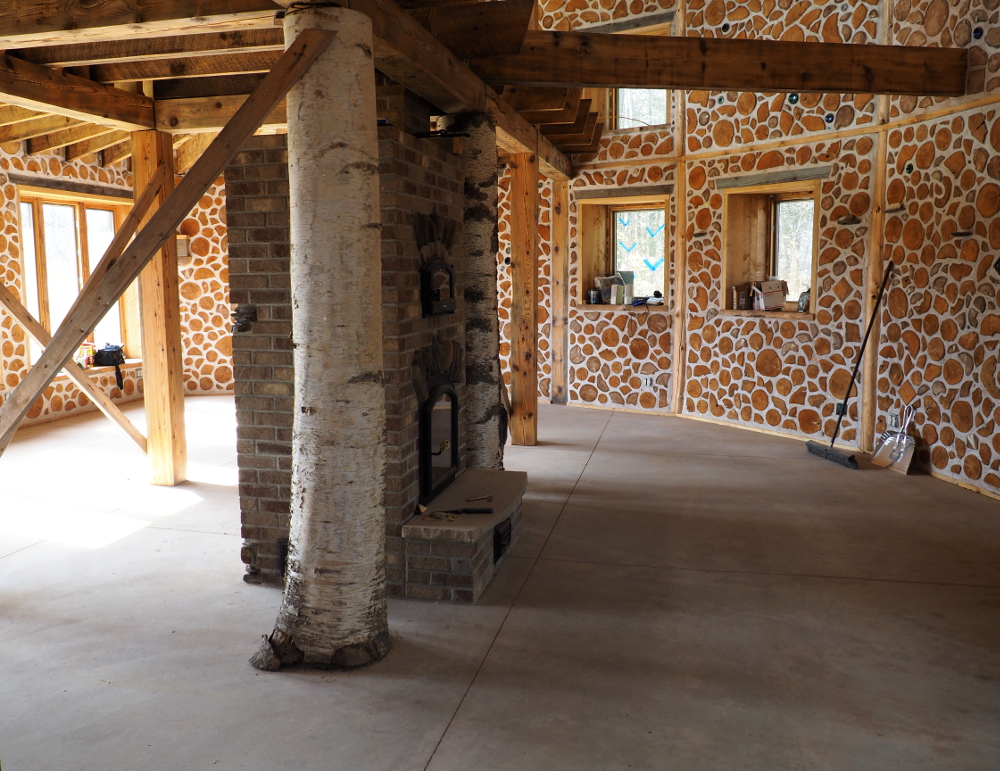
From our research, it seemed like the longest-lasting way to stain the floor was to use an acid-based stain. I ordered stain, sealer and wax from our local masonry yard. They were confused that I wasn’t buying more bags of lime. In order to protect the walls, posts, and masonry heater from the stain, we had to tape plastic everywhere, and I do mean everywhere.
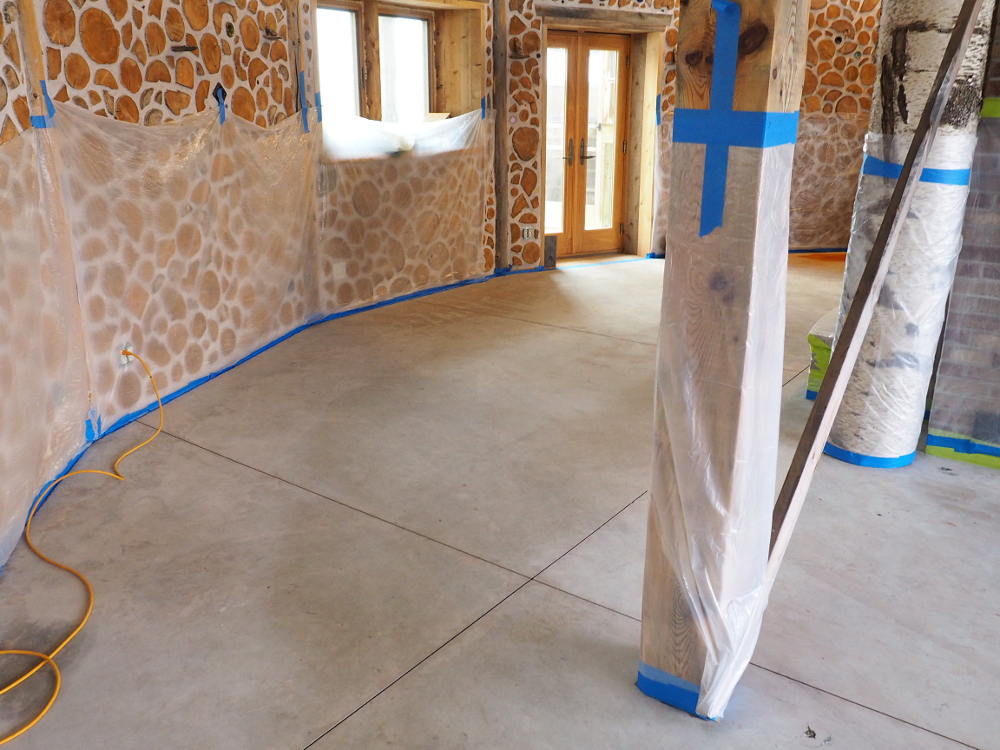
Just to be sure, we tried staining a couple of test patches which will be mostly invisible under the staircase.
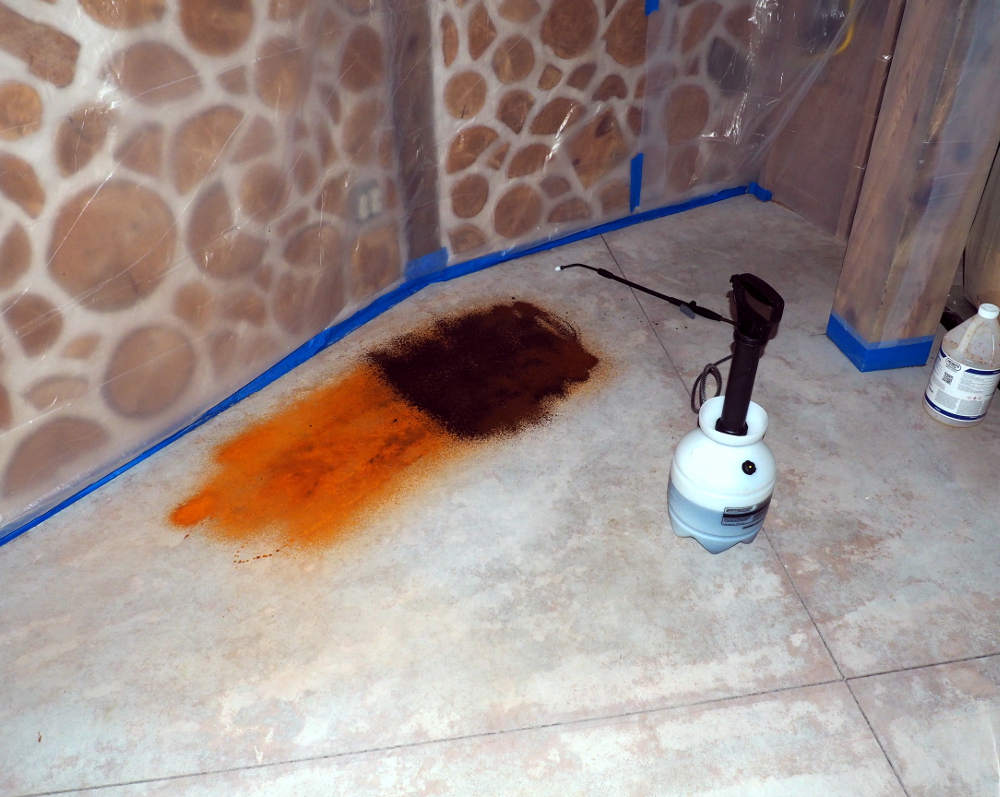
A plastic garden sprayer works great for applying the stain. We let it dry, sprayed another coat, let that one dry, neutralized and scrubbed off the residue about eight times, and enjoyed a tiny patch of stained floor. It was somewhat helpful, but still pretty hard to imagine what the finished product would look like. I turned up the in-floor heat to 58 degrees, donned my trusty VOC respirator (the acid fumes were not in any way pleasant), and commenced to spraying, taking care to NOT stain myself into a corner.
After applying a second coat the next day and letting it dry for a day as well, we took a peek at the floor. It was much darker than we expected, but we had a lot more scrubbing to do.
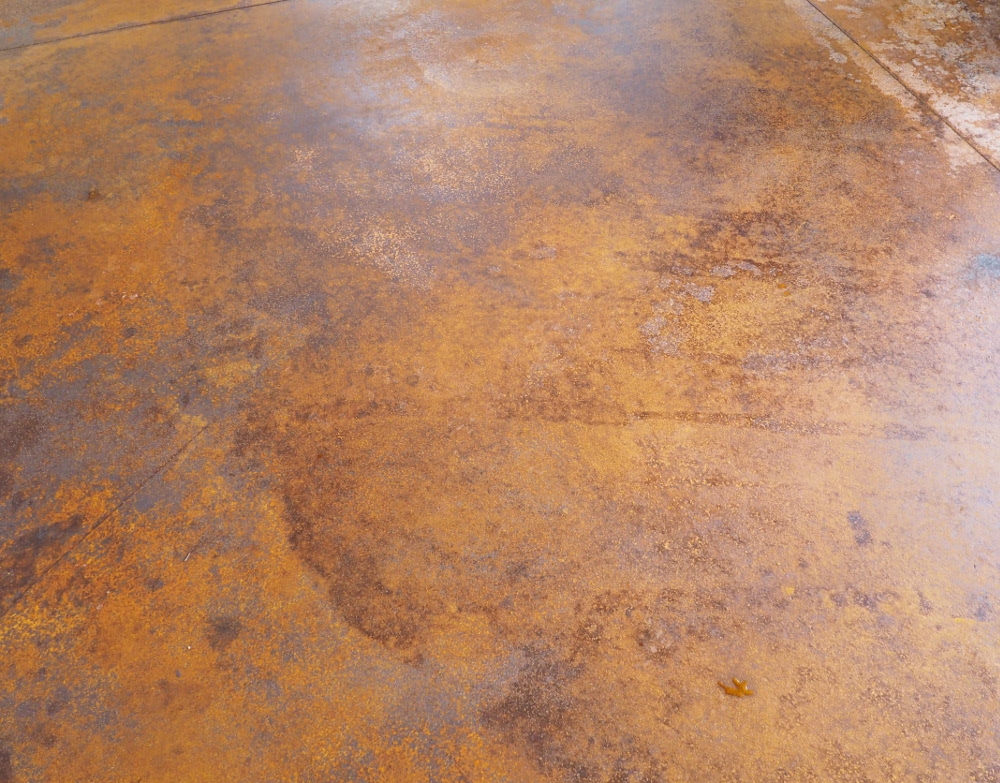
We neutralized the acid residue by pouring a water-and-baking-soda mixture on it, scrubbing it with a broom, and sucking it up with a wet-vac. Look at all this residue:
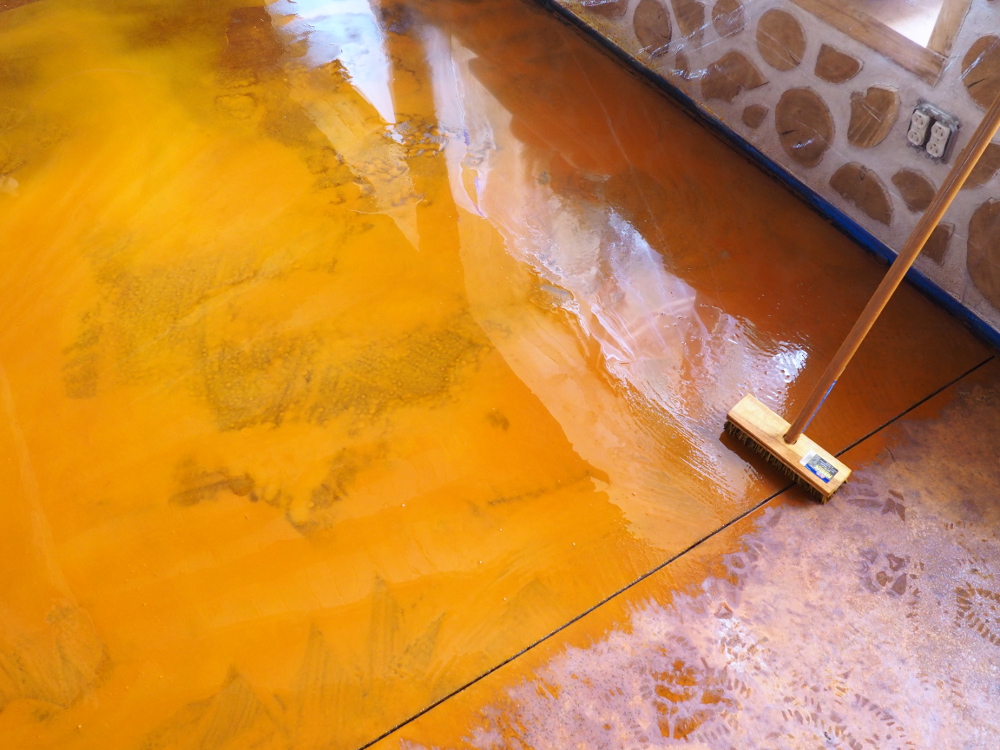
This post is getting a little long, so I will continue the stainy saga shortly.
